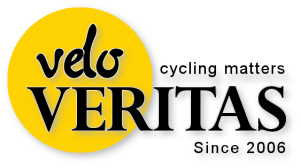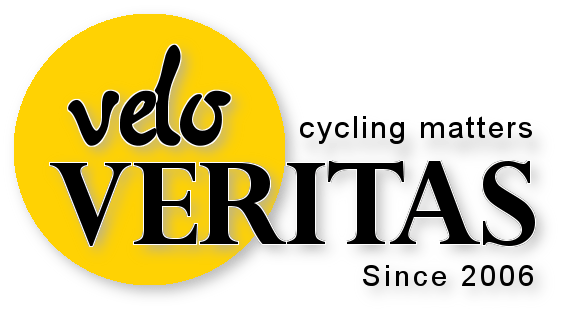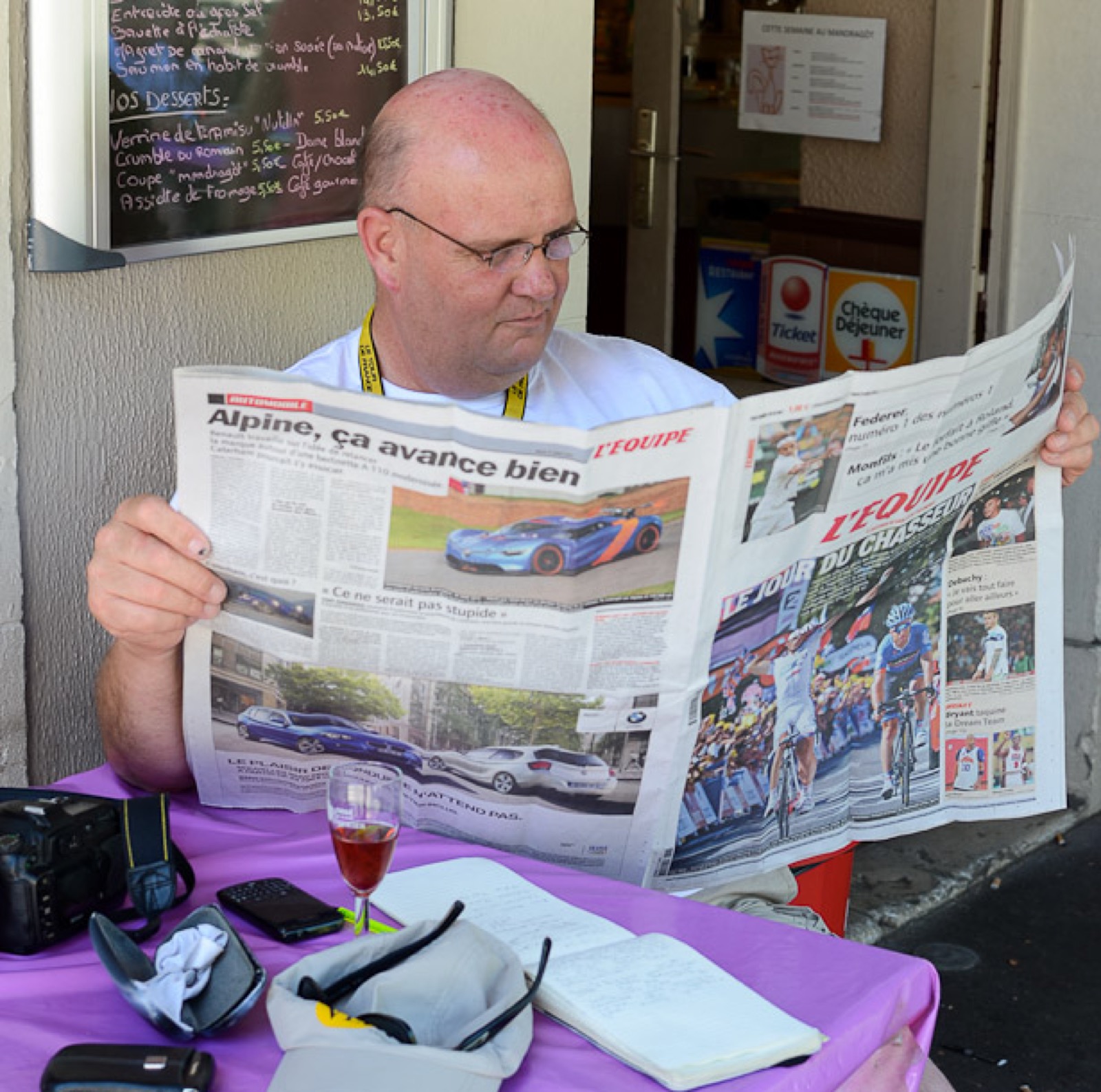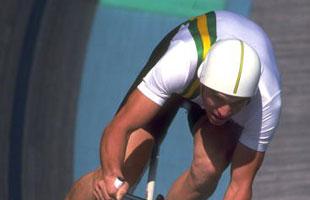
When we asked Aussie pursuit star of the 1980’s and 90’s, Dean Woods if we had his palmarès correct; he got back to us with his own list.
It rather speaks for itself …
- Olympic Games Gold Medallist at Los Angeles 1984.
- Olympic Silver Medallist at Seoul 1988.
- Olympic Bronze Medallist at Seoul 1988.
- Olympic Bronze Medallist at Atlanta 1996.
- 3 times World Cycling Champion ’83, ’84, ’96.
- 3 times Commonwealth Games Champion ’86 (double), ’94.
- Australian Sporting Hall of Fame Member – 2000.
- Recipient of Order of Australia Medal – Services To Cycling.
- Co-author of “The Dean Woods Manual of Cycling”.
- Melbourne to Warrnambool Road Race Winner.
- Melbourne to Warrnambool Record Holder 1990 (Time 5hrs, 12min – 262km)
- Ranked top 4 In the World for Individual Pursuit (From 1983 to 1992)
- Winner of 20 National Championships.
- Winner of 15 State Championships.
- 1 World Record.
- 4 National Records.
- French Amateur team ASCM Toulon 1986/7
- Professional Road teams;
- Team Stuttgart ’89/90
- Team Telekom ’91
- Southern Suns ’92
- Jayco ’93.
Without further ado let’s hear what one of the finest pursuit riders of his generation had to say to VeloVeritas, recently …
How did you get into cycling, Dean?
“If I look back through my family history whilst there have been a couple of family connections within the sport of cycling really there’s no outside influence or promotion to entice me to begin, so you could say I fell into the sport at 10 years-of-age.
“My older brother started to race and I would go along to watch but very quickly grew tired of just watching – then the chance to try the sport presented itself and I borrowed a club bike for some training rides and to try racing, my first race being on 03/07/1976.
“To say I was an ‘outdoor kid’ is probably an understatement and I remember my first bike at around the age of four or five making the rest of the world my playground.
“Back then learning to ride a bike as a way of getting to school was normal; it was either that or walk – which I wasn’t a fan of.”
Which riders were your inspiration as a young cyclist?
“The earliest inspiration was watching a local Athletic Carnival on the Australia Day long weekend which incorporated foot running, wood chopping and of course cycling.
“This was a typical format and in many senses was the backbone of Australian sporting culture, post war, through the country and many communities would have their own event, many of which do not exist nowadays but certainly for a young kid with an interest in sport it was bigger than Christmas.
“Growing up in a cycling environment, Euro cycling information was always somewhat slower and the national publication, ‘Australian Cycling’ by the late John Drummond was the magazine, our bible, for those who has a thirst for knowledge – but it wasn’t until my first view of the UK magazine ‘International Cycle Sport’ with full colour images of the heroes of the day competing in the races we had only heard about.
“Eddy Merckx was the inspiration, you would see images of him in Yellow, Pink or splattered in mud riding the classics and was always photographed taking charge of the race when it counted.
“I remember hearing a story as a young boy that at the beginning of every season, Eddy would remove his toe straps and ride the first month on a small fixed gear to get the pedalling fluency back in his legs after his break, so you can guess who mirrored this exactly.”
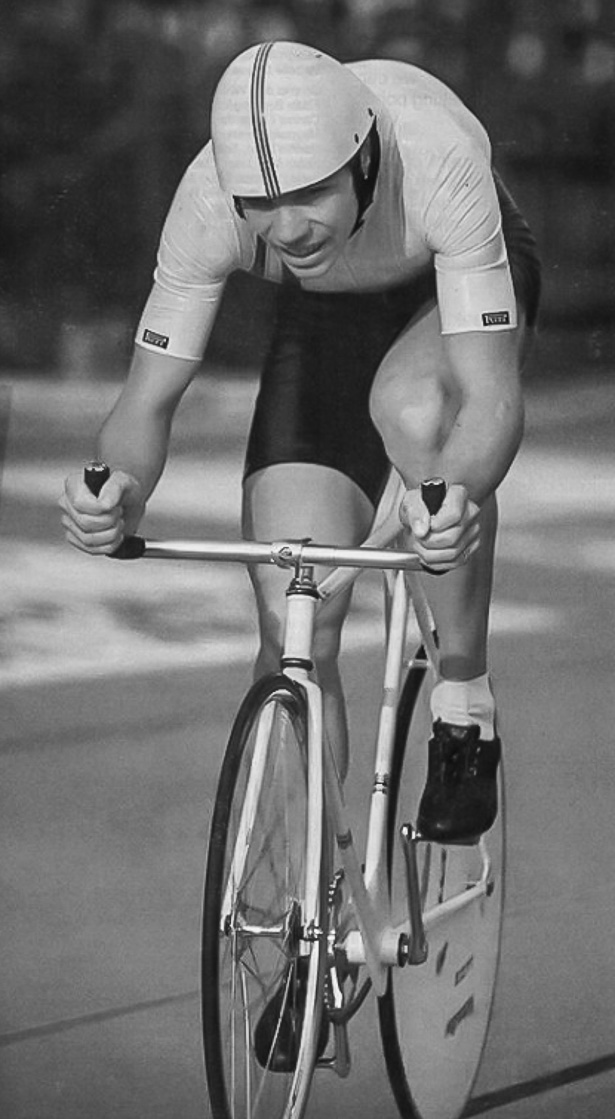
Your rise was rapid; an Olympic gold whilst still riding as a junior.
“If I reflect back there were a few thing happening before the ‘84 Olympics that I can honestly say they were definitely preparing me for this opportunity without realising it.
“Previously I was national champion as a 16 year-old on the road and track so a level of natural ability was evident but no obvious indication of what level it may reach with the correct guidance.
“At the age of around 15 I started to experiment – yes that’s right, experiment – with timing myself around a 60km circuit where there would be certain sections that I would sprint or put the hammer down for a few km’s but more of this later.
“Beginning my working life as an apprentice Plumber at the age of 15 ½ was a massive shock to the system, from sitting in a classroom at school for six hours and training, to working a laborious job for eight hours plus and trying to train, were worlds apart.
“I had won the Junior World Pursuit Championship and was second in the Points Race in New Zealand the year before in ‘83 so I guess I had a few indicators that I had some qualities to do something in the sport and up until this point I never had a coach to assist with development.
“Actually I didn’t have access to a coach until the National Coach Charlie Walsh contacted me just prior to Christmas ‘83 asking what my intentions with cycling were and what amount of training I was doing as he knew I was working full time as well.
“My times were comparable to what the seniors were riding so it made sense for Charlie to enquire what my intentions were in the short term as the Los Angeles Olympics were only six months away; realistically, I was thinking at maybe Seoul four years later but I was beginning to realise that there was an opportunity looming closer than that.
“When I was selected in the national team for the Olympic Games in Los Angeles, I was still 17 years-old and clarification had to be made to the Australian Olympic Committee if there was an age limit for selection in the cycling team as I was still licensed as a junior cyclist.
“This was new ground for everyone and there was a 12 month period where many things were changing in a hurry.”
The LA Olympics ’84 – a lot of pressure for a young man?
“I can honestly say that if the team was made up of 18 to 20 year-olds the result would have been dramatically different; it was my first exposure to a team environment and what an environment it was.
“Even though there were different ages, personalities and sometimes a little friction, everyone NEVER forgot why we were all there, to do the best as we could as individuals and as a team so as a young bloke I was experiencing the cold hard fact of cycling, “it’s bloody hard!”
“The team event I always had the reassurance of experience from the other guys to feed off but the individual pursuit was a different game; after all I was just the young punk on the team that had all of a sudden appeared on the scene.
“Could I do this, am I good enough to do this?, was going through my head however I was not going to die wondering and always had the conclusion that I had nothing to lose which as basic as it is seemed worked quite well.
“We all have an experience in our lives that is a game changer and this time was certainly mine, I was fortunate that mine was early in my life which allowed me to not only grew as an athlete but as a person as well and this life experience I still use every day.
“Just to put the word ‘pressure’ into perspective a quote from one of Australia’s best test cricketers and fighter pilot during World War Two, Keith Miller; he was asked this question by a young journalist during a post war tour of England on how he handles the pressure of international test cricket.
“His swift reply was “son – pressure is a Messerschmitt up your arse” that certainly puts pressure into perspective for me!”
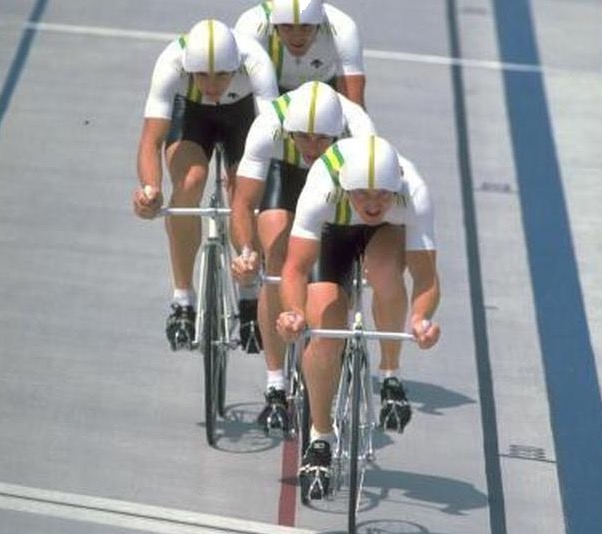
What about those fabulous bikes the USA team rode in LA – did that faze you at all?
“Some of the prototypes the Americans were developing were being trialled at the junior world championships in New Zealand the year before so they weren’t a huge surprise.
“However it was not clear whether they would be allowed at the games in LA or not as the usual protocol was to present any equipment developments or changes at the world championships the previous year and either passed or denied by the UCI.
“But who would be so daft to think that the UCI would stick to their own process!
“At the European championships in Brno leading up to the LA Olympics a few countries had disc wheels, Swiss, Italians etc. but word was circulating that they still has not been passed by the UCI and would be deemed illegal in LA, right?
“Totally wrong!
“Not that we had any funds for any equipment like disc wheels anyway, so we turned up at the St. Dominguez and quickly realised that it was an equipment free-for-all.
“After all, we should have realised that when US Cycling spend $250K on a bike with a total budget of around $5m to prepare for the games there was no way they were going to spend all this money on equipment for it not to be used. All aluminium frames made from leftovers from the space program, integrated handlebars and stem – the best of the best.
“We, on the other hand had a budget of around $25k for both the track and road program to support four months racing and training in Europe so thanks to a strong exchange rate of the Australian dollar the money was able to go a bit further; track gear was supplied but road bikes were our own responsibility.
“Our track bikes crafted by Geoff Scott in Sydney, manufactured out of his garage with a value at the time in raw material of less than $500 with team sponsor Malvern Star, made famous by Sir Hubert Oppermann, plastered all over the frame so our equipment was as Aussie as you could get. The only things missing was Kangaroo skin shoes and a meat pie for a helmet.
“The most intriguing thing was that we still won (the most profound experience possible) it was more of ‘what we didn’t have’ because we certainly didn’t have a lot but we still managed to keep it all together and never lost the focus on ‘giving ourselves every chance to do the best that we could.’
“And just to round things off, I found this line while doing some research for this article which explains a bit more the magnitude of the victory; “Altogether the US won a record 9 medals in cycling events. After the Games it was revealed 1/3 of the US team received blood transfusions before the event, which was still one year before it was banned by the IOC.”
“Just as long as blood doping was eventually banned sort of makes it ok?
“What a load of bollocks!”
On the subject of bikes; you rode through the transition from steel to monocoque and spokes to discs – can you tell us a little about that please?
“During the 80’s and 90’s there was a high level of development in bikes which form most of what we all see today.
“The Moscow Olympics in 1980 saw the first appearance of low profile bikes with Russia and East Germany being among the first. It was a crude version with the handle bars being welded directly to the front of the fork crown which is how Lothar Thoms from DDR won the kilo at the games that year.
“The LA games saw the introduction of alloy to frames and disc wheels though they was still a few years off from being used commercially due to the expense and 88’-89’ saw the emergence of the aero bars from the triathlon scene and at first were seen as just another gimmick, that was until Greg Lemond cleaned the floor with Laurent Fignon by a lousy 8 seconds on the last day of the 89’ TDF.
“Front wheel size ranges from 27” to 24”, then 26” and back to 27” so I suspect there was more focus on sales rather than testing of equipment during this time, the early 90’s saw the wider use of aluminium material for frames and then a gradual development of carbon fibre.
“The first years of carbon was very expensive and was only used on the top end bikes, now even the basics are carbon.
“I see bikes for around the $1k mark that are far better than the pros were using up until the mid-90’s.”
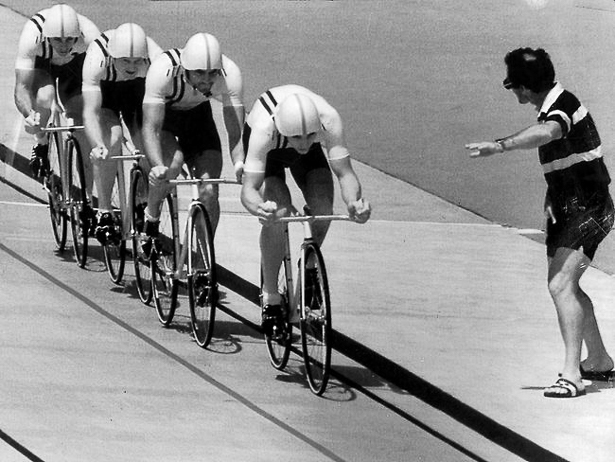
What gears did you ride back then and what were your best times – what do you think of the current ‘mega’ gears and times?
“All track events have gone through major changes in recent times and my take on this I will get back to; during my earlier years I was experimenting with high cadence under load although I had no idea what I was doing at the time, I was probably more interested in getting the training over with as soon as I could as training in the dark with candle power for lights was not a favourite of mine.
“After doing this two or three days a week I was noticing an improvement in my times around this circuit, the short hills I would punch up without any distress at all. What I was doing was laying the foundation for an efficient oxygen system and developing a powerful anaerobic capacity in my mid-teens required to ride four kilometres at a world standard without knowing it at the time.
“My gearing was generally between 88.2 and 90.6 inches with 170mm crank length, dependent on conditions, with the ability to ride consistent times for four or five races in the competition; at the time the world record was a 4:37 with most competitions still being held outdoors – so weather conditions had to be factored into gearing selection.
“So this is where the dynamics of pursuiting have changed, the IP now has two rides at best, all major competitions are held indoors so the environmental element is removed.
“I recall distinctly at a few world championships conducted outdoors with a 20km/h wind down the straight so you had a distinct advantage if you finished with a tailwind, so windy conditions with four rides over two days on 108 inch gear – I’d like to see that!
“Today everything is built around speed which is a good thing and these changes contribute largely to the sensational performances we see today, even the current world record held by Jack Bobridge will be broken as continual improvement is inevitable.”
Have a look at Part 2 of our Dean Woods interview.
